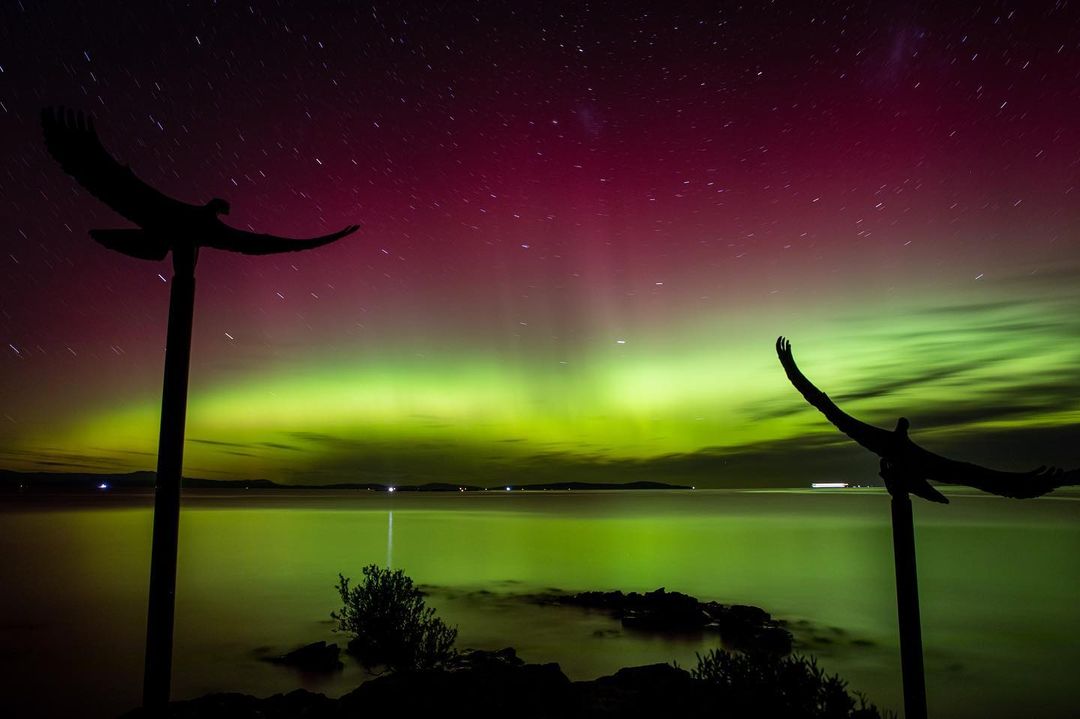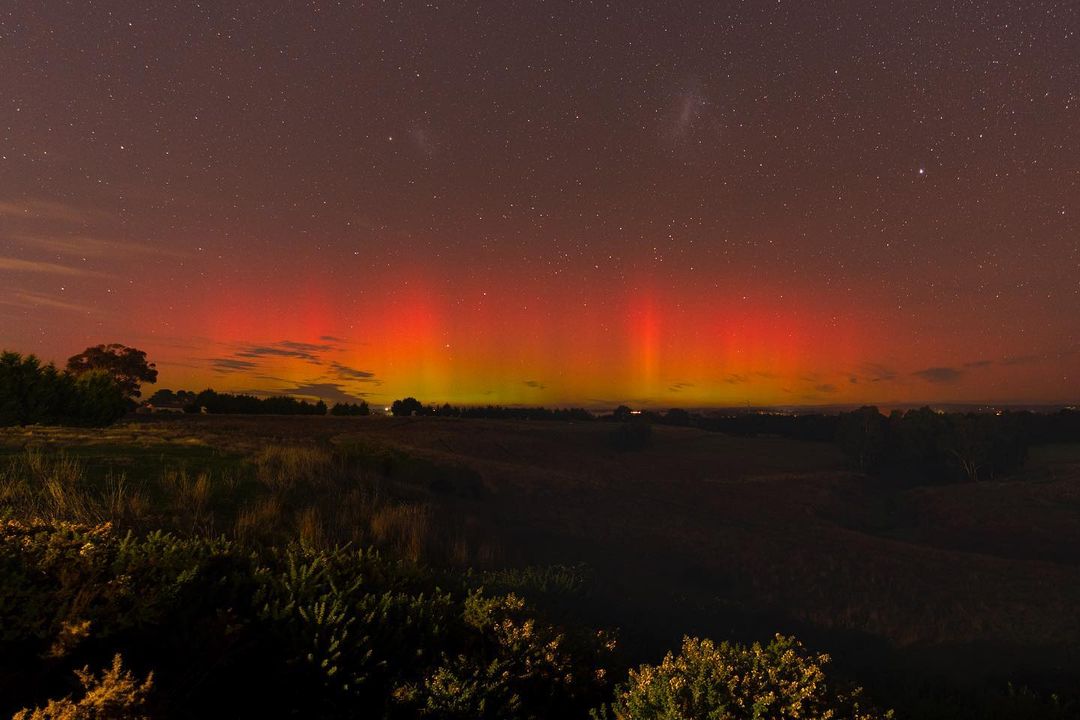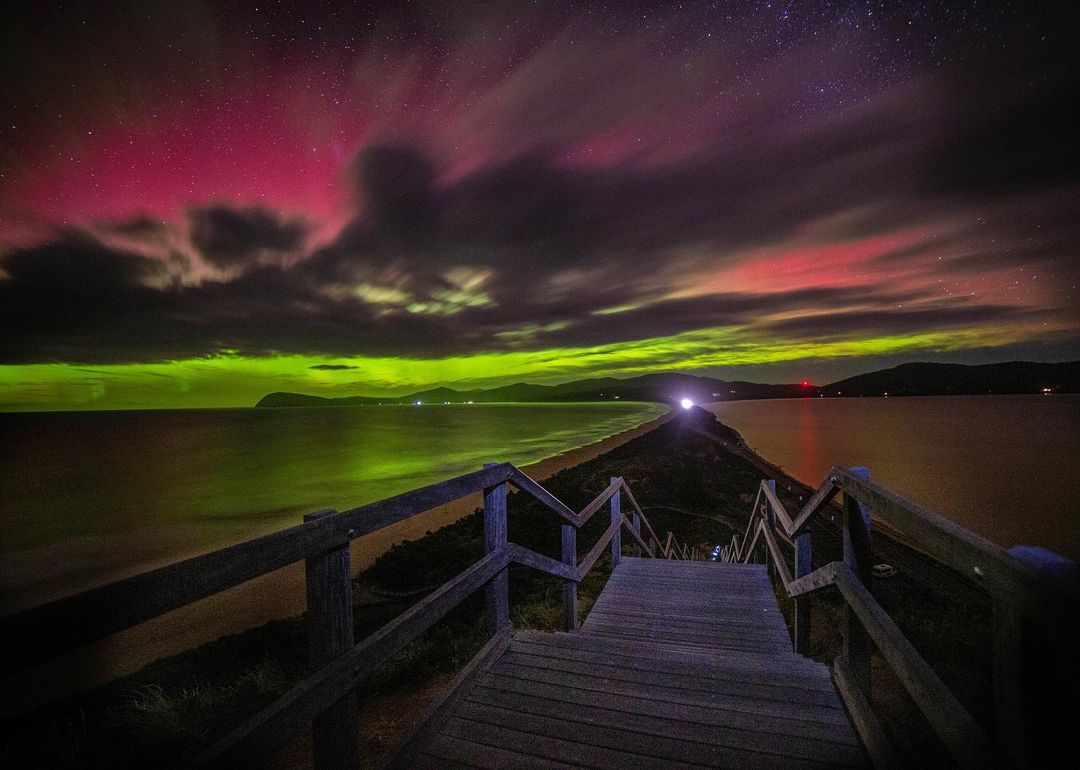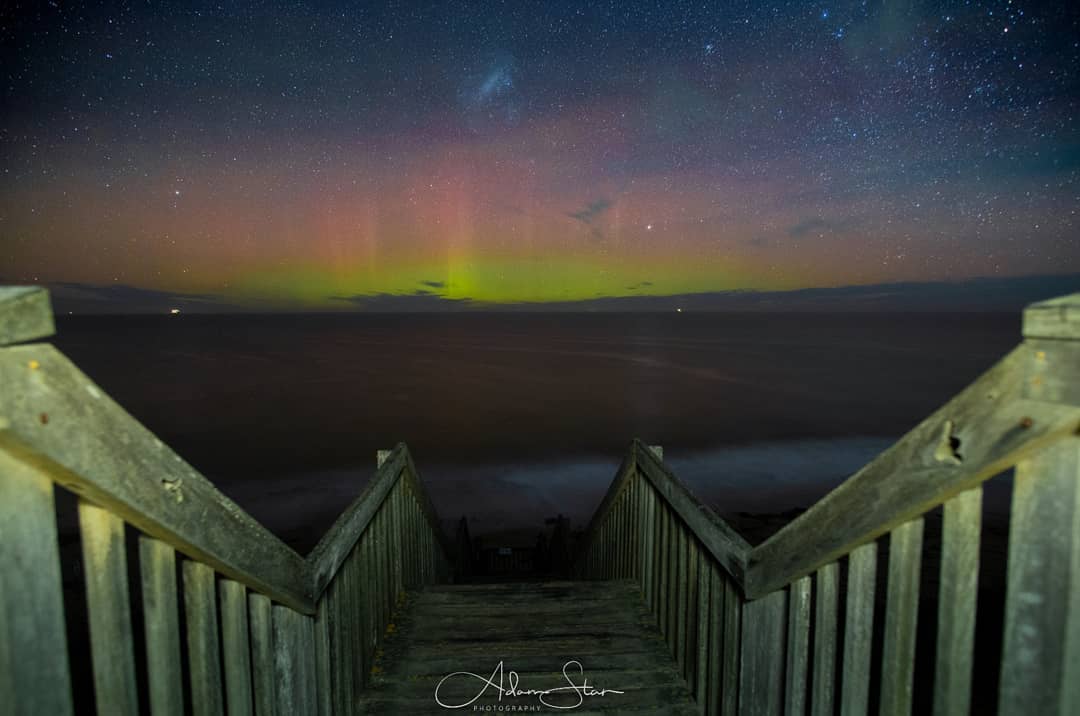Where and when can I see the Aurora Australis?
Tasmanians and residents of southern Victoria are going crazy over an incredible Aurora Australis display that happened on Wednesday night – but when can a local or visitor to Australia's southernmost parts expect to see the spectacular light show?
The short answer is there's a chance it'll happen again on Thursday night, although it likely won't be as dazzling as Wednesday night's effort. But unfortunately, you can't set the clock or your calendar to it.

Image: Roaring skies over Roaring Bay Beach, Dover, TAS. Source: @lindajeancoy on Instagram.
So what is the Aurora Australis again?
The Aurora Australis bursts into life when a solar storm erupts from the sun, projecting clouds of charged particles towards the earth at speeds of up to 2000 kilometres per second.
About a day after they left the sun, the particles deflect around the earth’s magnetic shield – which is known as the magnetosphere – and are guided towards the polar regions.
It’s these particles that create the spectacular light display in the sky, as the charged particles from the sun interact with gases in our atmosphere. The colour of the aurora depends on which gases are involved.
In the Northern Hemisphere, it's called the Aurora Borealis or Northern Lights. Down here, it's the Aurora Australis - not because Australia is special, but because the word Australis means "southern" in Latin.

Image: Source: @andysmithphotographic on Instagram.
Is there any time of year when it’s most likely?
Displays of the Aurora Australis are most likely when the earth’s magnetic field is best orientated to interact with the solar wind, in September and March. But they can occur anytime. It all depends on the weather in space.
Yes, space weather is actually a thing, and the Bureau of Meteorology has a Space Weather Service page here.
On that page you’ll currently find the following alert:
SWS AURORA ALERT - ISSUED AT 1923 UT on 12 May 2021 - GEOMAGNETIC STORM IN PROGRESS. AURORA MAY BE OBSERVED DURING LOCAL NIGHT TIME HOURS IN GOOD OBSERVING CONDITIONS AT HIGH LATITUDES.
The Bureau issues an Aurora Watch Notice when there is "a significant solar Coronal Mass Ejection (CME) or coronal hole likely to be geo-effective".
In plain language, that means when there is solar storm activity. The alert is issued when "space weather activity favourable for viewing aurora is in progress".
We contacted the Space Weather Service to ask whether the alert is still current, given that it has not been removed from its website. We’ll update this story when we hear from them.

Image: Bruny Island in Tas looking more like Greeny Pinky Island. Source: Simon Thomas @simmo_t on Instagram.
Where is the best spot in Australia to see one?
Since auroras (interesting grammatical fact: aurorae is also an acceptable plural) are strongest near the poles, the further south you go in Australia the better. They can sometimes be seen from the southern coastline of the mainland and even as far north as southern QLD.
But Tasmania is obviously the best spot, and that’s where two of the images in this story were taken, although two were also taken in the Geelong area in southern VIC.

Image: Barwon Heads on the Bellarine Peninsula SE of Geelong is famed for its colourful characters. Source: @adamstanphotography
So should you go and stand on a chilly hill in Tassie or southern VIC tonight? Well that's for you to decide (hopefully with updated advice from the Space Weather Service).
You should also know that there are showers forecast on the southern Vic coastline and for much of Tas overnight Thursday.
But if you do decide to go aurora spotting, try to find a secluded, elevated spot away from city lights. Oh, and face south.